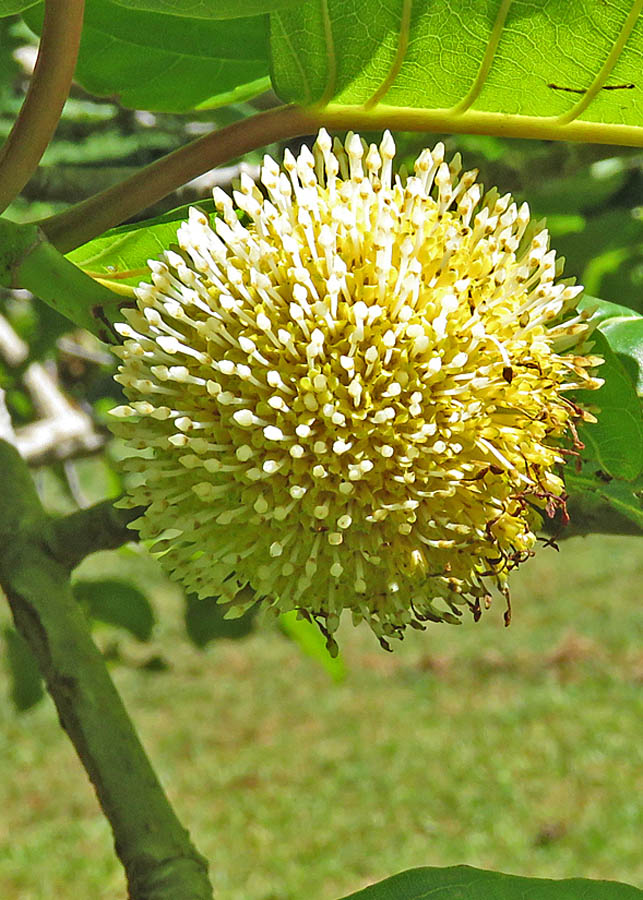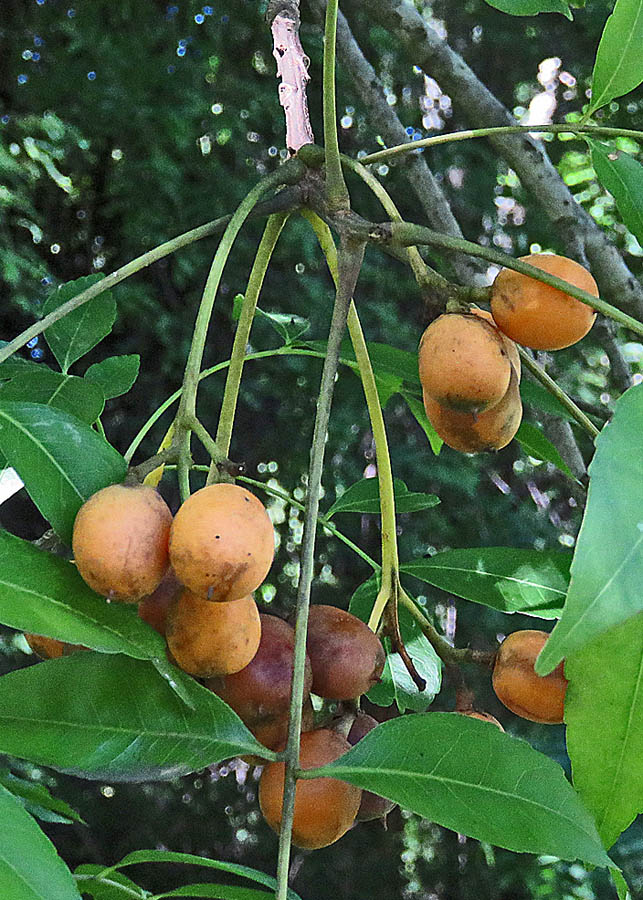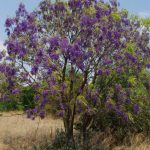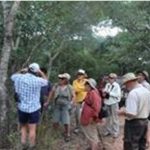TREE LIFE
FEBRUARY 2018
Mashonaland Calendar
Sunday February 18th: Thetford Game Park, Mazowe. There is a great diversity of vegetation (and game) there and we look forward to exploring this area again. Bring a picnic lunch, chair, hat etc. Those wanting to share lifts meet at CABS Head Office parking at the end of Northend Road at 0830 hours for a quick departure.
Saturday February 24th: Mukuvisi Woodlands, Blatherwick Gate entrance. Meet at 15.00 to enjoy a beautiful afternoon in the woodlands. Please be prompt at the gate so that the gate can be locked behind us.
Tree Society Notes
Taken from The Rhodesia Science News Vol.1, No 8, December 1967
Last month’s Tree Life produced some comment – proof that members are reading both the News and our newsletter. However, there has been no comment on the Tree Society outings and the attendance is often limited to the committee, new recruits and one or two of the old faithfuls. The committee would be interested to know why.
We are a jolly crowd at the outings, there is usually something for everyone. The erudite may dash off to list trees, some learn a few new vernacular names, others listen to stories about trees, some just look at trees, birds, flowers and the scenery, or even just sit and chat.
The committee caters for all types. If members do not find outings interesting, the committee needs you to make suggestions or ask questions. We could discuss, for example, trees used for medicine or trees as indicators of soil, rocks, minerals or water. How did the balancing rocks form and trees grow on top of huge granite domes?
Come to the next outing with your queries. If it is a difficult one, some advance notice please. Please also voice your criticism and comments.
Note from MCL: Having read this, I ask myself ‘so what’s new?’ after only two people, plus the chairman, turned up for the last Saturday afternoon walk. Then this morning in the Botanic Gardens (3rd Feb), there was a large turn out of 21 and such a lot of interest shown in everything – a really exciting outing with five new members from different corners of the earth! We were particularly grateful to the Director of the Gardens, Chris Chapano, for coming to tell us about a variety of potentially good news – all pointing in the right direction at present. We just need to be able to proceed along this route in the right direction – A luta continua, the struggle continues – victory is (hopefully!) certain in our new Zimbabwe.
National Botanic Gardens Walk 2nd December 2017
It was pleasing to see a good turnout on a bright, sunny Saturday morning. Ann Sinclair was the leader for this outing and first of all stopped at a Searsia (Rhus) right next to the car park. This is a tree that we have always walked by – Meg identified it as possibly a Searsia natalensis. We next stopped at the Tamarind tree which had new leaves and buds and a few flowers. Not far off this particular tree was another Tamarindus indica in full flower – just loads and loads of them! Fairly close by was an Acokanthera oppositifolia (Bushman’s Poison) and a youngish Diospyros mespiliformis (Jackal-berry).
We then went on to look at the Ficus bussei and the Ficus sycomorus and, in a recently cleared area, there was a smallish fig tree with large ovate to broadly elliptic leaves and a few figs growing on the main stem, which Meg thought could be a Ficus sansibarica (Knobbly Fig). Since there were knobbly fig trees around and we also knew that the Ficus chirindensis also produced figs on knobs, it was decided to do a comparison. Both figs had a stalk and were roughly the same size. The mystery fig was slightly pear shaped and had greenish spots whilst the F. chirindensis was round, no spots and was rather knobbly. In a comparison with the F. sansibarica, both figs were about the same size but the F. sansibarica fig was round and had no spots. Not only that, the leaves of the F. sansibarica were oblong to ovate and not even half the size of the mystery fig. We never identified the mystery one.
Whilst some of us (including Mark Hyde) were chasing the figs, there was another party which included Meg Coates Palgrave doing their ‘thing’. We had a look at two trees growing together; one was a Dovyalis caffra (Kei-apple) and the other a fairly small Erythrina lysistemon. There was only one tree label, but the Dovyalis caffra label was attached to the Erythrina! In all, an enjoyable outing.
Tony Alegria
National Botanic Gardens Walk Saturday 6th January 2018
There was an excellent turn out for the first Botanic Garden Walk of the year. Seventeen of us came out on a glorious clear blue sky morning to enjoy the gardens which are looking really good. The “clear blue sky” bit was a worrying feature as, after the excessively dry December, I think most of us would have preferred to be walking with brollies and wellies. However, it was more than very pleasant to be out on such a beautiful morning.
Tony’s theme for the day was to look at the huge variety of features in a single species using Meg’s favourite statement – “well, just look at us, all Homo sapiens, and just look at the variety of shapes and sizes and features!” As a very mature, relatively new student to this game of botanizing there really is very little chance that I shall ever get my head around the variations on the themes, rather let me sit at the bus station and watch the world go by, knowing that all the passers-by are Homo sapiens, whatever their shape, size, colour or creed. By the same token, it is difficult to top the total pleasure of being out on a lovely day, in a lovely garden with lovely people and observing the multitude of things to be observed – the calls of three species of manikins, praying mantis on a leaf, flowering shrubs, baby frogs making their way through the long grass and, of course, the trees.
Our first stop, as it often is because of its situation, was Homalium abdessammadii, Zambezi Brown Ironwood, which was just coming into flower – flowers in terminal and axillary panicles, cream with anthers conspicuously red – a really spectacular small tree. There was a lot of die back on this little tree, so we hope it is not coming to the end of its days.
We then crept into the undergrowth to view Macaranga capensis, EUPHORBIACEAE, (Spiny Macaranga or Wild Poplar) and the first example of the diversity of features used for identification. This was indeed a spiny Macaranga, very unlike the next Macaranga we came across which was short on spines, maybe because it was a better grown tree with its lower branches well off the ground and so not threatened by hungry livestock. Meg and Mark discussed at length whether this second Macaranga capensis really was capensis.
The following is a note from Meg received later after we had discussed this issue; we will surely follow it up one of the next walks:
“Just done some more checking and this should make the decision as to which is which even easier!
- capensis. This is how Coates Palgrave (2002) divides them: Leaves with 5-11 veins from the base and 6-14 pairs of lateral veins; stipules large, leaf-like, persisting for some time; petiole slender, up to 30 cm long, often rose-pink, the colour extending along the midrib and main veins; male flowers with 2–4 stamens; fruit smooth; stem and branches sometimes spiny; a tree of low-altitude evergreen forest
- mellifera: Leaves with 3 (5) veins from the base and 6 or 7 pairs of lateral veins; stipules small and narrow, falling early; petiole 3–8 cm long, green, not tinged with pink; midrib green; male flowers with 13–17 stamens; fruit warty; stem and branches without spines; a tree of medium- to high-altitude evergreen forest ”
Thank you Meg.
We then looked at tree number 159, labelled Vitex keniensis on which we found a small bunch of dried fruit. This is a cousin of our Vitex payos, the Chocolate-berry, but endemic to Kenya. From Wikipedia: Vitex keniensis (also called Meru Oak) is a species of plant in the family LAMIACEAE. It is threatened by habitat loss. It is a magnificent tree when mature, being one of the largest trees that are native to Kenya. Due to its use as a source of wood that is both durable and has an attractive grain, it has been severely over-exploited and is now rare. Later on we arrived at another Vitex, this time Vitex amboniensis, the Large-fruited Vitex or Plum Fingerleaf. This tree is native to Zimbabwe and nearby countries.
All these discussions are a really useful in ensuring Tony’s endeavours to re-label the trees in the Botanic Gardens correct and up to date.
We then moved on to a fine specimen of Cola mossambicensis, endemic to Mozambique and Malawi. Note from Meg: “If the Cola we looked at was from the Bvumba it is unlikely to be C. mossambicensis, as that occurs in low altitude forests and hasn’t been recorded from Zimbabwe. Again we need to count the veins to establish which species it is.
Leaves with 12–15 pairs of lateral veins = C. mossambicensis. Leaves with 8–12 pairs of lateral veins = C. greenwayi.”

Burtt-Davyi nyasica, Botanical Gardens, Harare
The very fine specimen of Burtt-Davyi nyasica was flowering and what a spectacular little round pom-pom of a flower it has. In the same vicinity we looked at Ficus bubu, Lowveld Forest Fig, a magnificent tree. We later found a River Sandpaper Fig, Ficus capreifolia, which, just to confuse us has all on the same plant, leaves in whorls of three, in pairs opposite each other, or single and spiraled.
The Cordyla africana, Wild Mango, was surrounded by a wonderful crop of fruit on the ground. We also stopped to admire the abundant crop of fruit on the Zanha golungensis, Forest Zanha or Smooth-fruited Zanha, it was spectacular.

Zanha golungensis
We next had a look at Pterocarpus lucens, Small-leafed Blood Wood. Tony had been in the Gardens a few days before and the tree had been covered in yellow flower, but sadly there was no sign of them now. And we then moved on to Baphia maissaiensis, Jasmine Pea or Sand Camwood. Here there were two of them growing side by side, one with white flowers and one with pink flowers. Next to the Baphia were Schinziophyton rautanenni, False-balsa, Manketti nut or Wild Almond. We then passed a very fine specimen of Acacia erioloba, Camel thorn, Giraffe thorn.
This was just a few of the trees we discussed, the group was in many places discussing many trees and different items of interest on the walk. A lovely morning and so good to see you all: Tony, Meg, Mark, Musa, Tatenda, Sarah, Richard, Barbara, Peter, Don, Penny (all the way from Marondera, so good to see you), Rob (observing and photographing all the little things), Tieg, Dave, Vernon and Marilyn.
-Mary Lovemore
TONY ALEGRIA CHAIRMAN



